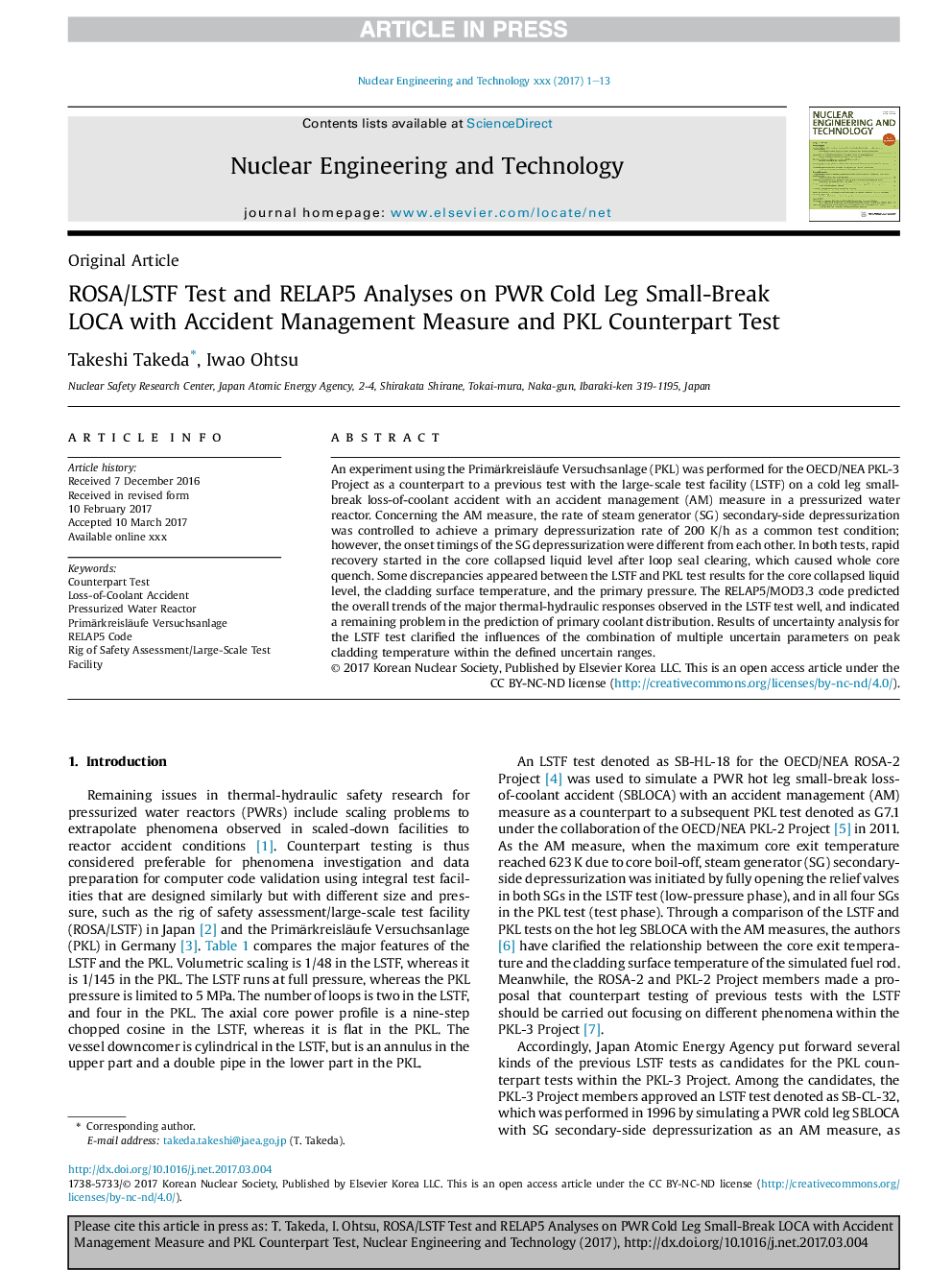| Article ID | Journal | Published Year | Pages | File Type |
|---|---|---|---|---|
| 5477921 | Nuclear Engineering and Technology | 2017 | 13 Pages |
Abstract
An experiment using the PrimÓrkreislÓufe Versuchsanlage (PKL) was performed for the OECD/NEA PKL-3 Project as a counterpart to a previous test with the large-scale test facility (LSTF) on a cold leg small-break loss-of-coolant accident with an accident management (AM) measure in a pressurized water reactor. Concerning the AM measure, the rate of steam generator (SG) secondary-side depressurization was controlled to achieve a primary depressurization rate of 200Â K/h as a common test condition; however, the onset timings of the SG depressurization were different from each other. In both tests, rapid recovery started in the core collapsed liquid level after loop seal clearing, which caused whole core quench. Some discrepancies appeared between the LSTF and PKL test results for the core collapsed liquid level, the cladding surface temperature, and the primary pressure. The RELAP5/MOD3.3 code predicted the overall trends of the major thermal-hydraulic responses observed in the LSTF test well, and indicated a remaining problem in the prediction of primary coolant distribution. Results of uncertainty analysis for the LSTF test clarified the influences of the combination of multiple uncertain parameters on peak cladding temperature within the defined uncertain ranges.
Related Topics
Physical Sciences and Engineering
Energy
Nuclear Energy and Engineering
Authors
Takeshi Takeda, Iwao Ohtsu,
